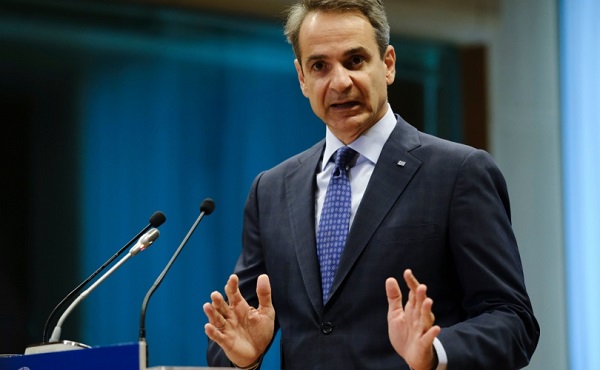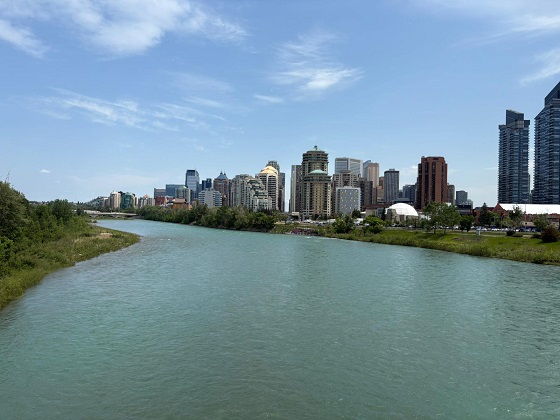International
Greece plans to spend 20 billion euros to halt ‘national threat’ of population decline

From LifeSiteNews
Demographer and data analyst Stephen Shaw has said that ‘no society in history has been known to come out of’ the ‘spiral’ of population decline.
Greece plans to spend 20 billion euros on economic incentives aimed at halting the country’s population decline, which Prime Minister Kyriakos Mitsotakis has called a “national threat.”
The nation that has been referred to as the “cradle of civilization” now has a fertility rate of 1.3, one of the lowest in Europe, and far below the rate of 2.1 that is needed to maintain the population.
In fact, the country now has twice as many deaths as it has births. Last year, Mitsotakis shared during a demographics conference that Greece recorded one birth for every two deaths in 2022.
On September 30, a demographic plan to incentivize having children, totaling 20 billion euros, was presented to Greece’s government. The money will be spent on tax breaks, day care vouchers as well as the establishment of day care centers in workplaces, and cash benefits rewards for raising children. Families with three or more children will receive greater compensation.
Family and Social Cohesion Minister Sofia Zacharaki said on October 2 that “the ultimate goal” of the plan “is to improve the standard of living.”
She noted that, according to current forecasts, by 2070 the biggest population group will be people over 90 years old.
The country is one of many undergoing different phases of population decline headed toward collapse. Greece’s particularly low birth rate may be further exacerbated by the economic hardships plaguing the country, which in July had the second-highest unemployment rate in the EU.
Demography experts such as data analyst Stephen Shaw, the creator of the documentary “Birthgap,” are skeptical about whether economic incentives can reverse the trend of population decline. He has noted that even the Roman Empire, in its later stages, enacted policies aimed at increasing birth rates, including taxing the childless.
According to Shaw, “No society in history has been known to come out of” the “spiral” of population decline.
In his film “Birthgap,” he has documented how declining birth rates in the U.S. and around the world are being driven by an “explosion” in childlessness as opposed to smaller family sizes.
This trend of childlessness began to crop up in the 1970s. For example, in Japan in 1974, one in 20 women were childless. By 1977, the ratio was 1 in 4, and by 1990, it had reached 1 in 3, a statistic that held in 2020. Shaw has shared that most countries have likewise now become “childless nations,” where one-third or more people will become “childless for life.”
It is notable that the Institute for Family Studies (IFS) confirmed in December 2022 that the majority of childless women actually desire children. Delayed childbearing, and as Shaw commented in his film, failing to “find the right partner at the right time” are major factors contributing to the childlessness explosion.
Commentators such as Elon Musk have warned that if global birth rates continue to decline at their current projected rates, “human civilization will end.”
International
Georgia county admits illegally certifying 315k ballots in 2020 presidential election

From LifeSiteNews
Approximately 150 ‘tabulator tapes’ tracking the votes of more than 300,000 early voters were not signed.
Fulton County, Georgia, has admitted to including 315,000 early votes in the disputed 2020 presidential election despite the fact that they were not properly certified according to state law.
State law demands that voting “tabulator tapes” that publish the recorded results of polling stations must be verified and signed by poll workers, but approximately 150 tapes tracking the votes of more than 300,000 early voters were not signed.
In a hearing before the State Election Board (SEB), an attorney for Fulton County said the county does “not dispute that the tapes were not signed.”
“It was a violation of the rule,” she said. “They shouldn’t have done it.”
“At best, this is sloppy and lazy. At worst, it could be egregious,” fired back Georgia SEB Member Janelle King. “It could have affected an election.”
The December 9 hearing was the result of election integrity activist David Cross, who filed a challenge with the board in 2022, alleging that Fulton County’s handling of early voting violated the state’s election rules.
“These are not clerical errors. They are catastrophic breaks in chain of custody and certification,” Cross said during the hearing.
“Because no tape was ever legally certified, Fulton County had no lawful authority to certify its advanced voting results to the secretary of state. Yet it did,” said Cross. “And Secretary [Brad] Raffensperger accepted and folded those uncertified numbers into Georgia’s official total without questioning them.”
“This is not partisan. This is statutory. This is the law. When the law demands three signatures on tabulator tapes and the county fails to follow the rules, those 315,000 votes are, by definition, uncertified,” said Cross.
Raffensperger, Georgia’s secretary of state, took to social media to discount the allegations.
“Georgia has the most secure elections in the country and all voters were verified with photo ID and lawfully cast their ballots. A clerical error at the end of the day does not erase valid, legal votes,” averred Raffensberger.
– Secretary Raffensperger on alleged procedural errors in Fulton County’s administration of the 2020 election.
— GA Secretary of State Brad Raffensperger (@GaSecofState) December 20, 2025
Meanwhile, Republicans took issue with Raffensperger’s denial of the seriousness of Fulton County’s procedural lapse.
Republican Lieutenant Governor Burt Jones ridiculed Raffensberger’s post.
“If only Georgia had an official responsible for preventing clerical errors that undermine election integrity,” said Jones, a candidate for Georgia governor.
“Is there anyone in Georgia who has that job, Brad?” asked Jones, his opponent in the state’s gubernatorial race.
If only Georgia had an official responsible for preventing clerical errors that undermine election integrity.
Is there anyone in Georgia who has that job, Brad? https://t.co/5v89jcPZwL
— Burt Jones (@burtjonesforga) December 22, 2025
“We just started peeling the layers back on this onion and it already stinks,” said U.S. House Rep. Mike Collins (GA-10). “Years later, when the truth finally comes out, Trump was right.”
“President Trump is owed a massive apology,” asserted Collins. “Turns out over 300,000 early votes in the 2020 election were illegally certified but still included in the final results.”
Collins said he is “tired of empty words from weak leaders. The people of Georgia demand action.”
President Trump is owed a massive apology.
Turns out over 300,000 early votes in the 2020 election were illegally certified but still included in the final results.
I’m tired of empty words from weak leaders. The people of Georgia deserve action. pic.twitter.com/pcCrdGFXVS
— Mike Collins (@MikeCollinsGA) December 20, 2025
In the 2020 election, Joe Biden narrowly beat out incumbent President Donald Trump by less than 12,000 votes in the Peach Tree State.
International
Communist China arrests hundreds of Christians just days before Christmas

From LifeSiteNews
The operation lasted nearly five days, yet no public statement was issued by officials,” the outlet noted. “Within just the first two days, several hundreds of people were taken away for questioning.
Hundreds of Christians in China will likely spend Christmas in jail this year, according to a recent report. Starting on December 13, the Chinese Communist Party (CCP) mobilized “more than a thousand police officers, SWAT units, anti-riot forces, and firefighters” in the Zhejiang Province’s Yayang Town in Wenzhou City, raiding churches and conducting mass arrests of Christians, ChinaAid reported Friday.
“Belongings of relevant individuals were illegally confiscated, roads leading to the church were completely blocked by police, and Christians in Yayang Town were unable to enter the Yayang church. The operation lasted nearly five days, yet no public statement was issued by officials,” the outlet noted. “Within just the first two days, several hundreds of people were taken away for questioning. On December 16 and 17, at least four more individuals were detained.”
Two local Christians, 58-year-old Lin Enzhao and 54-year-old Lin Enci, were labeled “principal suspects of a criminal organization” by the CCP, with locally-posted wanted posters charging the two with “picking quarrels and provoking trouble,” which ChinaAid noted is a “commonly used charge” by the CCP against religious and political dissidents. Over the past several years, CCP officials in Yayang Town have attempted to forcibly destroy church property, including symbols such as crosses, and install CCP propaganda and imagery, such as the five-star Red Flag and the CCP’s constitution. Enzhao and Enci were key figures in opposing the CCP’s efforts.
Chen Yixin, director of China’s Ministry of State Security, is a native of the province and has led efforts to demoralize the Christian community there, including by initiating a program to destroy crosses in 2014 and install the national flag, the Constitution, laws, and socialist core values in Christian spaces and promote the “localization” and “politicization” of religious activities. However, the Christians of Yayang Town have resisted the CCP’s efforts for over a decade, hosting rallies and demonstrations and even confronting state police when necessary.
Following the mass arrests this month, the CCP hosted an “Elimination of Six Evils” demonstration, with SWAT officers and riot police deployed en masse “to demonstrate force, intimidate local Christians, and create an atmosphere of fear, framing the earlier law enforcement actions as ‘results of the anti-organized crime campaign,’” by which the government means the crackdown on Christians. According to ChinaAid, police have stationed vehicles at the homes of known Christians, “disrupted” communications among Christians in the area, and have even gone “door-to-door” questioning church members and asking them to denounce Enzhao and Enci.
“Government-driven public opinion campaigns are spreading defamatory rumors portraying Christians as ‘unpatriotic’ or belonging to a ‘cult,’” ChinaAid reported. “This approach aligns with China’s recent trend of criminalizing certain religious activities. On September 29, China’s leader reiterated in a speech the need to ‘systematically advance the Sinicization of religion.’ Earlier, mass arrests at Beijing Zion Church saw pastors and church members detained on fabricated charges of ‘fraud.’”
In comments to The Washington Stand, ChinaAid founder and Senior Fellow for International Religious Liberty at Family Research Council Bob Fu said, “The massive pre-Christmas assault on churches in Wenzhou is a chilling reminder that the Chinese Communist Party fears the light of Christ most when it shines brightest. To raid churches days before Christmas is not only an attack on Christians — it is an assault on human dignity, conscience, and the hope that faith brings to a wounded world.” He continued, “History teaches us that no regime has ever succeeded in extinguishing faith through force. These pre-Christmas attacks will only strengthen the resolve of China’s house churches and further expose the moral bankruptcy of state-sponsored persecution.”
The U.S. Commission on International Religious Freedom (USCIRF) and other religious liberty watchdogs have repeatedly warned that China’s totalitarian regime is enacting human rights abuses against religious groups within the nation’s border. A USCIRF report late last year detailed mass arrests and the destruction or removal of church property, part of CCP President Xi Jinping’s “sinicization of religion” policy. Religious groups and leaders who do not register with the official government-approved religious organizations are often arrested, imprisoned, and forced into “anti-cult” programs to “de-program” Christians. Earlier this year, USCIRF called on President Donald Trump to designate China as a “country of particular concern” (CPC) due to the CCP’s brutal oppression of Christians and other religious dissidents.
-

 Automotive2 days ago
Automotive2 days agoCanada’s EV gamble is starting to backfire
-

 Agriculture1 day ago
Agriculture1 day agoEnd Supply Management—For the Sake of Canadian Consumers
-

 Alberta1 day ago
Alberta1 day agoAlberta Next Panel calls to reform how Canada works
-

 International6 hours ago
International6 hours agoGeorgia county admits illegally certifying 315k ballots in 2020 presidential election
-

 Environment1 day ago
Environment1 day agoCanada’s river water quality strong overall although some localized issues persist
-

 Alberta6 hours ago
Alberta6 hours agoCalgary’s new city council votes to ban foreign flags at government buildings
-

 Digital ID24 hours ago
Digital ID24 hours agoCanadian government launches trial version of digital ID for certain licenses, permits
-

 Alberta4 hours ago
Alberta4 hours agoA Christmas wish list for health-care reform









